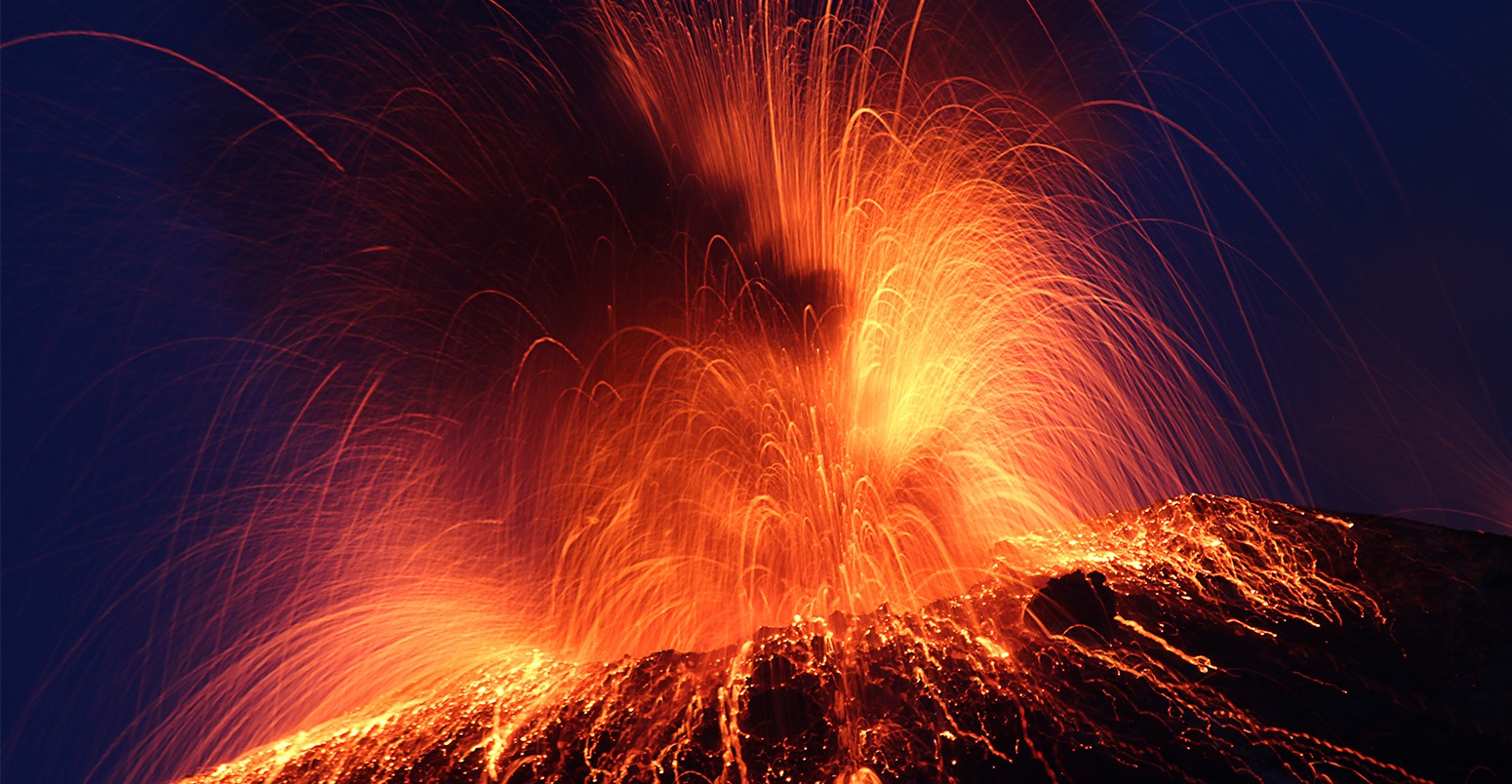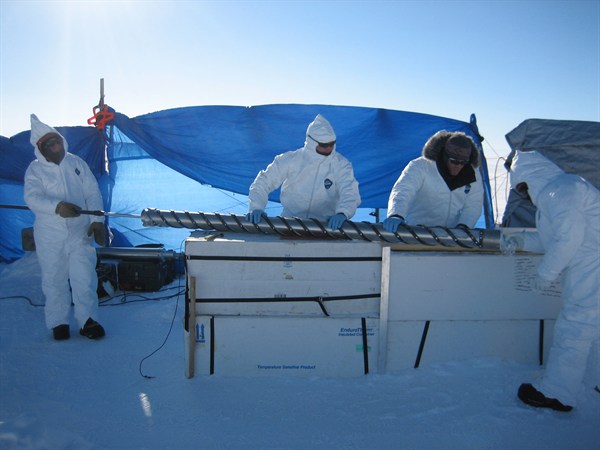
How volcanic eruptions changed climate and human history
Dr Joseph McConnell
07.08.15Dr Joseph McConnell
08.07.2015 | 6:00pmA guest post from Dr. Joseph McConnell, a research professor at the Desert Research Institute, which is part of the Nevada System of Higher Education in the US.
Throughout human history, large volcanic eruptions have affected the year-to-year variability of the Earth’s climate and even triggered crop failures and famines. These events may also have contributed to disease pandemics and the decline of agriculture-based societies.
In our study published today in the journal Nature , we used ice-core records to provide a new reconstruction of the timing of nearly 300 individual volcanic eruptions extending as far back as the early Roman period. And then we worked out the radiative forcing of these eruptions – or how they have affected the energy balance of the Earth.
Summer cooling
When volcanoes erupt, they inject large amounts of sulphur dioxide into the upper atmosphere. These combine with oxygen and water to form sulphate aerosols, which shield the Earth’s surface from incoming solar radiation and cause cooler temperatures for as long as two years after an eruption.
We derived our reconstruction of past eruptions by looking for these aerosols in more than 20 individual ice cores extracted from ice sheets in Greenland and Antarctica.
These new records show that large volcanic eruptions in the tropics and high latitudes were the dominant drivers of climate variability, responsible for numerous and widespread summer cooling extremes during the past 2,500 years.
Our study shows that 15 of the 16 coldest summers recorded between 500 BC and 1,000 AD followed large volcanic eruptions – with four of the coldest occurring shortly after the largest volcanic events.
Our team of 24 scientists from the United States, United Kingdom, Switzerland, Germany, Denmark, and Sweden verified the timing of these events with the help of tree ring data. To align the two types of data, we used a distinctive signature of an extra-terrestrial cosmic ray event around 774-775 AD, which would could see in the tree rings and ice cores.
A freshly drilled ice-core extracted in Greenland is pushed out of the core barrel. Credit: Olivia Maselli
Mystery cloud
We reviewed ancient and medieval documentary records from China, Babylon (now Iraq), and Europe, which contain references to unusual atmospheric observations as early as 254 BC. These phenomena included diminished sunlight, discoloration of the solar disk, the presence of solar coronae, and deeply red twilight skies.
Tropical volcanoes and large eruptions in Iceland and North America often caused severe and widespread summer cooling in the Northern Hemisphere by injecting sulfate and ash into the high atmosphere. These particles also dimmed the atmosphere over Europe to such an extent that the effect was noted and recorded in independent archives by numerous historical eyewitnesses.
These new findings resolve a long-standing debate regarding the causes of one of the most severe climate crises in recent human history, starting with an 18-month “mystery cloud” or dust veil observed in the Mediterranean region beginning in March, 536 AD. Our data show this was caused by a large eruption in the high latitudes of the Northern Hemisphere. The initial cooling was intensified when a second volcano located somewhere in the tropics erupted only four years later. In the aftermath, the Northern Hemisphere experienced exceptionally cold summers.
This pattern persisted for almost fifteen years, with subsequent crop failures and famines – likely contributing to the outbreak of the Justinian plague that spread throughout the Eastern Roman Empire from 541 to 543 AD, and which ultimately decimated the human population across Eurasia.
Rise and fall
Our new reconstruction of volcanic forcing will lead to improved climate model simulations through better quantification of the sensitivity of the climate system to volcanic influences during the past 2,500 years.
As a result, climate variability observed during more recent times can be put into a multi-millennial perspective – such as times of significant cultural change such as Great Migration Period of the 6th century in Europe.
This reconciliation of ice-core records and other records of past environmental change will help define the role that large climatic perturbations may have had in the rise and fall of civilizations throughout human history. With new high-resolution records emerging from ice cores in Greenland and Antarctica, it will be possible to extend this reconstruction of volcanic forcing probably all the way back into the last Ice Age.
Main image: Stromboli volcano erupting at night.
Sigl, M., Winstrup, M., McConnell, J. R. et al. (2015) Timing and climate forcing of volcanic eruptions for the past 2,500 years, Nature, doi:10.1038/nature14565


